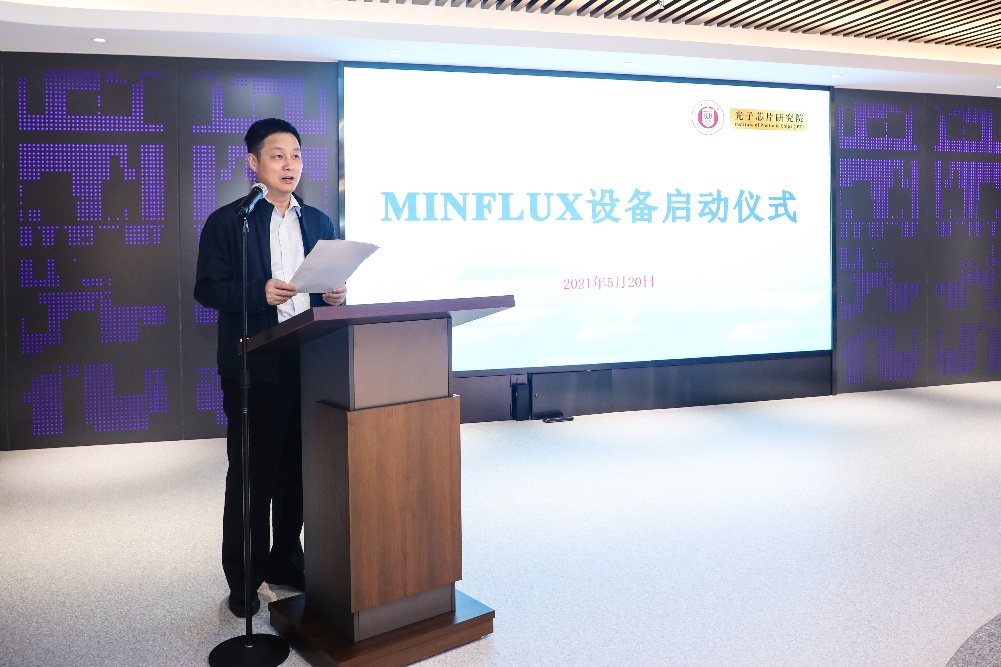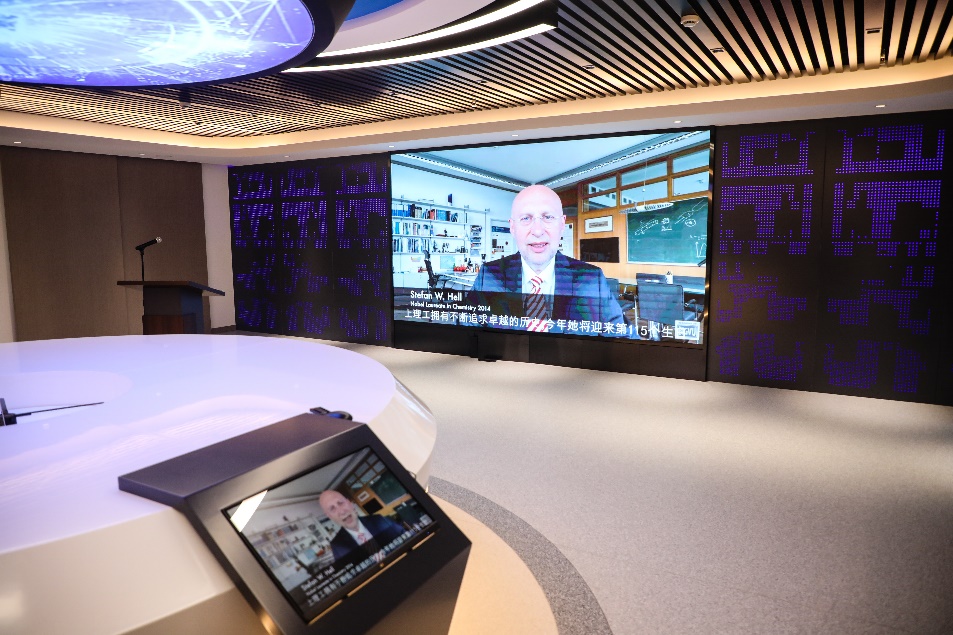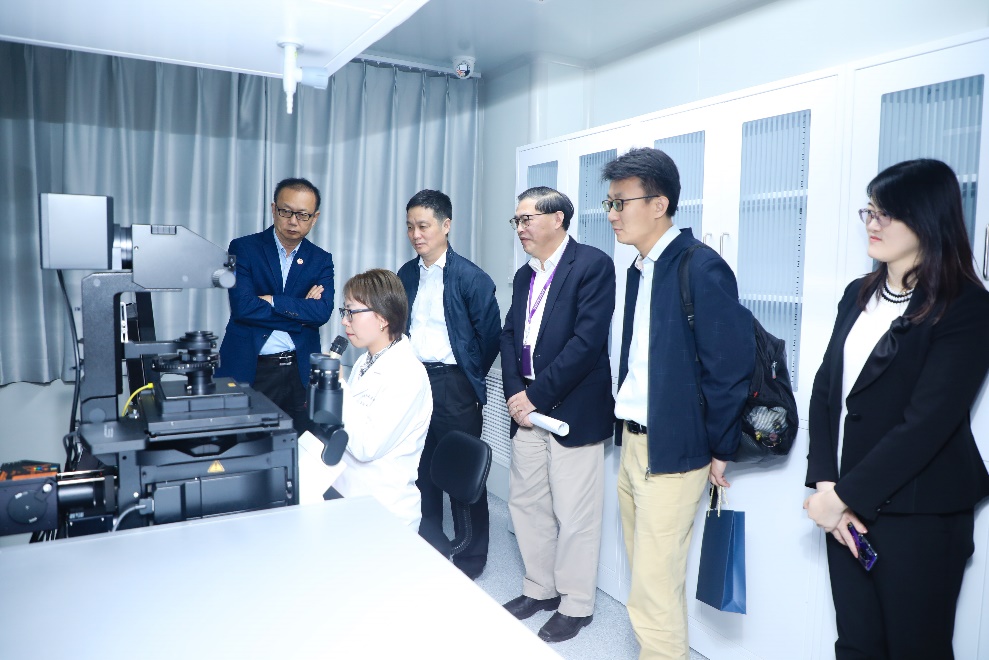On the afternoon of May 20, the Photonic Chip Institute held a starting ceremony of MINFLUX device in its “Photonics Engagement Sala” of the Photoelectric Building. The equipment was started by Prof. Stefan Hell, inventor of MINFLUX super resolution microscopic imaging technology as well as the 2014 Nobel Prize laureate. The ceremony was presided over by Prof. Zhang Qiming, executive vice director of the institute.
In his speech, President Ding Xiaodong pointed out that the MINFLUX equipment started by the Photonic Chip Institute will greatly push forward such work as theoretical research, device design and manufacturing of photonic chips, and that he looks forward to further strengthening exchanges and cooperation between the uinversity and the government, the uinversity and enterprises, as well as the uinversity and other schools of education, which will help accelerate the disruptive innovation in the field of photonic chips from 0 to 1, so as to rebuild a new height for the technological progress of key industries in Shanghai, and make greater contributions to the construction of Shanghai Sci-Tech Innovation Center.

At the ceremony, Professor Stefan Hell delivered a speech via video and announced the starting of the MINFLUX device. He introduced the development process of the MINFLUX device and the significance of the equipment to the scientific research work of Shanghai and USST. He said that scientists need to strengthen cooperation in order to make greater contributions to the development of human beings. He expressed the hope that he could strengthen scientific research cooperation with USST in the future and jointly promote the progress of human science and technology.

In his speech, Academician Gu Min of USST introduced the significance of the introduction of this device, as well as the situation of the Photonic Chip Institute’s team building and research as for this device. The team will take advantage of this device to study neural networks, make double efforts to develop an internationally leading platform for super-resolution optics, meet the arrival of the new global peak of super-resolution optics, and promote the application of super-resolution technology in various fields.

In order to promote the construction of “high-level local universities” in Shanghai and build a world-class optical laboratory, the Institute of Photonic Chips of our university has introduced the MINFLUX equipment technology from the Abberior Instruments GmbH, Göttingen, Germany, one of the first three brand instruments developed in the world as well as the first single nanometer scale imaging system in the Asia Pacific region. In 1994, Prof. Stefan Hell proposed STED super-resolution microscopy, which overcame the limits of Abbe’s principle and made people’s understanding enter the nano world. As a result, Prof. Stefan Hell was awarded the 2014 Nobel Prize. Again in 2017, Prof. Stefan Hell proposed MINFLUX, a super-resolution display technology based on minimum radiation flux for the first time, which opened the “post super resolution era.” With this device, one hundred thousandth of the hair can be seen in vivo, which provides a new platform for the study of neural networks. MINFLUX's multi-color, vivo, submicron and nanoscale spatiotemporal super-resolution fluorescence imaging and tracking capabilities make it a powerful tool in chip research and development, as well as biopharmaceutical research, such as the study of virus invasion and mutation mechanism, and optical information storage.


 Home
·
News & Events
·
Content
Home
·
News & Events
·
Content

